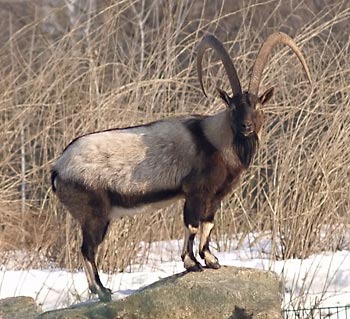Facts About Wild goat
The wild goat, known scientifically as Capra aegagrus, inhabits forests, shrublands, and rocky terrains ranging from Turkey and the Caucasus in the west to Turkmenistan, Afghanistan, and Pakistan in the east. Unfortunately, this species is currently listed as "Near Threatened" on the IUCN Red List, primarily due to habitat destruction and degradation. Interestingly, wild goats are one of the ancestors of domestic goats (Capra hircus).
There are various subspecies of wild goats, including the Bezoar ibex (C. a. aegagrus) and the Sindh ibex (C. a. blythi). These goats are found in regions such as Turkey, the Caucasus, Armenia, Azerbaijan, Iran, Turkmenistan, Afghanistan, and Pakistan, favoring mountainous areas with specific habitat conditions.
Wild goats are recognized for their social behavior, mating rituals, and distinctive reproductive patterns. Females have a gestation period of about 170 days, and their young, called kids, are weaned after six months. However, wild goat populations face significant threats from poaching, habitat loss due to logging, and competition with domestic livestock for resources.

 Syria
Syria